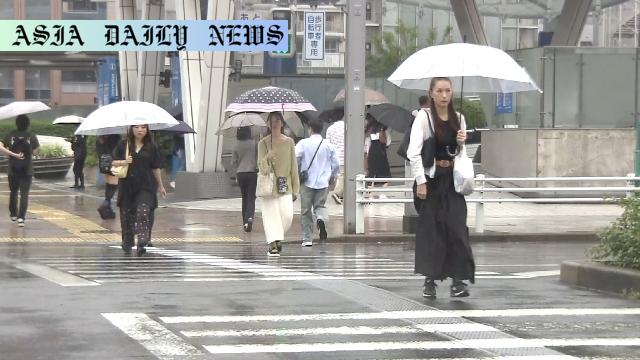Heavy Rains: Intense showers are expected in Japan’s eastern and western areas, anticipated to bring landslides and flooding risks.
- Heavy rains predicted across eastern and western Japan.
- Intensity to reach over 50mm per hour in certain regions.
- Residents advised to be vigilant for landslides, floods.

Heavy Rains Expected Across Japan: A Detailed Forecast
Japan is facing a serious weather warning as heavy rains are forecasted to hit regions between its eastern and western areas along the Pacific coast. According to the Meteorological Agency, a low-pressure system over the Sea of Japan, combined with a rain front, has already intensified the rain in various regions as of Saturday. This situation is expected to worsen with the continued influx of warm and damp air.
The Shikoku region, for instance, could witness extremely heavy rainfall exceeding 50 millimeters per hour accompanied by thunder until late Saturday night. Similarly, the Tokai region is expected to grapple with these intense showers until early Sunday morning. Meanwhile, areas like the Kinki and Hokuriku regions will likely experience slightly milder but still significant heavy rains of over 30 millimeters per hour until Sunday morning. The situation in Kanto-Koshin remains critical as inclement weather may persist into Sunday evening.
Expected Rainfall Totals and Regional Breakdown
When examining the rainfall over a 24-hour period leading to Sunday evening, alarming totals emerge. The Tokai region may accumulate up to 180 millimeters of rainfall, while the Kanto-Koshin and Shikoku regions could receive around 150 millimeters. The Hokuriku and Kinki regions might experience up to 120 millimeters of rain in the same timeframe. Such figures highlight the severe nature of this weather event, creating widespread concerns over possible hazards.
In light of these predictions, weather officials have called on residents to remain vigilant. Authorities are particularly concerned about the heightened risk of landslides, flooding in low-lying areas, and rapidly swelling rivers, which could pose significant threats to communities and infrastructure. Early preparations and adherence to safety instructions will be paramount in mitigating these hazards.
Safety Measures and Recommendations
To counter these adverse weather conditions, residents are advised to stay informed through official updates and warnings. Those living in areas prone to landslides or flooding should consider evacuating to safer locations if conditions get worse. It is also crucial to prepare emergency kits equipped with essential items such as water, food, flashlights, and first aid supplies. Motorists are encouraged to avoid flooded or waterlogged roads to prevent accidents and delays.
Moreover, local authorities have been actively monitoring weather patterns and deploying resources to assist at-risk areas. Community-level preparedness, combined with personal vigilance, remains the most effective approach to minimizing damage and ensuring safety during this challenging weather episode.
The continuous monitoring of rainfall patterns by meteorological services will help communities adapt as situations evolve. Ensuring robust communication between residents and emergency response teams is essential in averting potential disasters.



Commentary
The Impact of Extreme Rainfall in Japan
The recent forecast of heavy rains in Japan raises significant concerns for numerous communities and ecosystems across the country. As extreme weather events become increasingly frequent, it is imperative to reflect on the resilience of infrastructure, preparedness of citizens, and the responsiveness of early-warning systems. Meteorological agencies play a pivotal role in preempting such disasters and providing crucial insights that can save lives.
However, the challenges posed by nature are multifaceted. Heavy rains, for instance, are not just about water accumulation or inconvenience; they directly correlate with more hazardous phenomena such as landslides, flash flooding, and structural damage to buildings and roads. This particular weather situation comes as a stark reminder of the vulnerability faced by densely populated and low-lying areas in Japan. Governments need to continuously assess and improve urban planning strategies in anticipation of such risks.
Lessons in Preparedness and Awareness
There is much to learn from these situations, emphasizing prevention over reaction. Community awareness campaigns must be intensified, ensuring that nuanced warning systems reach even the most remote households. Moreover, individual preparedness is equally critical. As highlighted in this scenario, merely being informed may not suffice; proactive measures, such as securing household items prone to water damage or having a predefined safety plan, are essential during severe weather conditions.
This report underscores the importance of fostering a culture of resilience. Alongside governmental initiatives, citizen engagement holds immense power in shaping the collective response to such challenges. As we move forward, integrating these lessons might be pivotal in alleviating the impacts of future weather extremities in Japan and beyond.